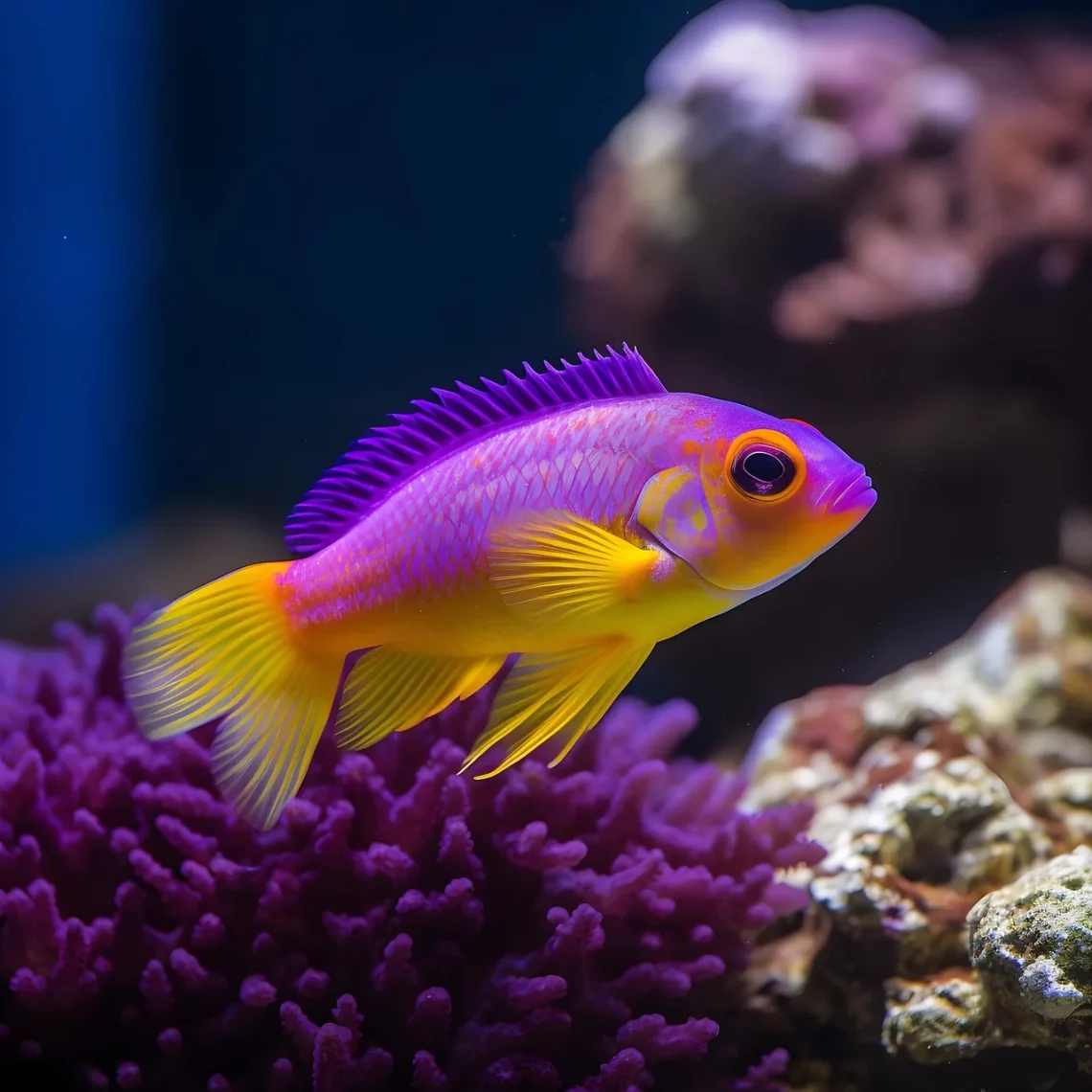
The Fascinating World of Fish with Bulging Eyes
The underwater world is a realm of astounding diversity and beauty, filled with creatures that often defy our expectations. Among these creatures, fish with bulging eyes stand out not just for their unique appearance but also for their fascinating adaptations to various aquatic environments. These remarkable fish have evolved over millions of years, showcasing a range of adaptations that help them survive and thrive in their respective habitats. The bulging eyes, which may seem peculiar at first glance, play a crucial role in their survival, offering advantages in navigation, hunting, and evading predators.
The ocean and freshwater bodies are teeming with life, and each species has its own story to tell. Fish with bulging eyes can be found in various environments, from the shimmering depths of the ocean to the murky waters of rivers and lakes. Their unique adaptations often reflect the specific challenges they face in these habitats, making them a subject of intrigue for scientists and marine enthusiasts alike. Understanding these adaptations can provide insights into the complexities of aquatic ecosystems and the evolutionary processes that shape them. As we delve deeper into this captivating world, we encounter not only the aesthetics of bulging eyes but also the evolutionary significance behind this fascinating trait.
Unique Adaptations of Bulging-Eyed Fish
Fish with bulging eyes are not just visually striking; they possess unique adaptations that enhance their ability to survive in various aquatic environments. One of the primary reasons for their bulging eyes is improved vision. In low-light conditions, such as deep-sea environments or murky waters, these fish benefit from larger eyes that allow more light to enter, granting them better visibility. This adaptation is particularly crucial for predatory species that rely on keen eyesight to hunt effectively.
Moreover, bulging eyes can help these fish detect movement and differentiate colors in their surroundings. This heightened visual acuity can be vital for avoiding predators or locating prey. Certain species, such as the notorious deep-sea anglerfish, have evolved to possess particularly prominent eyes that aid in their survival in the dark depths of the ocean. The combination of bulging eyes and bioluminescence allows them to lure unsuspecting prey close enough to strike.
Additionally, bulging eyes may also serve a social function in some species. In fish that exhibit complex social behaviors, prominent eyes can play a role in communication, helping them convey signals to one another. This can be especially important during mating rituals or territorial disputes, where visual cues can influence social hierarchies.
In summary, the adaptations of fish with bulging eyes are diverse and multifaceted. From enhanced vision in low-light conditions to social signaling, these features illustrate the intricate ways in which nature has shaped these fascinating creatures to thrive in their environments.
The Role of Habitat in Eye Evolution
The evolution of bulging eyes in fish is closely tied to their habitats. Different environments present unique challenges, and the adaptations seen in these fish often reflect their specific needs. For instance, fish living in bright, shallow waters may not require the same adaptations as those residing in the dark depths of the ocean.
In shallow, well-lit waters, fish may develop larger eyes to take advantage of the abundance of light, allowing them to see more effectively while foraging for food. However, in deeper waters where light penetration is minimal, larger eyes become crucial for survival. The extreme conditions of deep-sea habitats have led to the evolution of species like the goblin shark, which possesses large, bulging eyes that are optimized for detecting faint light and movement in the pitch-black depths.
Furthermore, the murkiness of certain freshwater habitats can also influence eye shape and size. Fish that inhabit turbid waters often have larger eyes, as this adaptation allows them to detect prey and predators more efficiently. In these environments, the ability to see in low visibility conditions is paramount for survival.
The evolution of bulging eyes is also influenced by ecological interactions. Fish that must navigate around complex structures, such as coral reefs or underwater vegetation, may develop adaptations that enhance their depth perception and spatial awareness. This can lead to the emergence of bulging eyes, which provide a broader field of vision, helping them avoid obstacles and predators.
Overall, the relationship between habitat and eye evolution highlights the dynamic interplay between environmental conditions and biological adaptations. Fish with bulging eyes exemplify how organisms can evolve specific traits to thrive in their unique surroundings.
Species Spotlight: The Most Notable Bulging-Eyed Fish
Among the myriad of fish species boasting bulging eyes, several stand out due to their remarkable adaptations and intriguing behaviors. One such species is the **Bumphead Parrotfish**. Known for its distinctively large, rounded head and protruding eyes, this fish is a vibrant inhabitant of coral reefs. The bulging eyes of the bumphead parrotfish offer excellent vision in the colorful and complex reef environment, allowing it to forage for algae effectively.
Another fascinating example is the **Mola Mola**, or ocean sunfish. This enormous fish has disproportionately large eyes relative to its body size, which aids in its ability to spot predators and navigate the vast ocean. The mola mola is known for its unique swimming behavior, often sunbathing at the surface, and its bulging eyes help it monitor the surrounding waters for threats.
The **Bubble Eye Goldfish** is a domesticated variety that showcases the whimsical side of bulging eyes. This ornamental fish features fluid-filled sacs beneath its eyes, creating the appearance of bulging eyeballs. While primarily kept for aesthetic purposes, the bubble eye goldfish’s unique features serve as a reminder of the incredible diversity in the aquatic world.
Lastly, the **Red-Lipped Batfish** is another notable species. Found in the Galápagos Islands, this unusual fish has prominent eyes and a peculiar appearance, with bright red lips that make it stand out. The bulging eyes of the red-lipped batfish help it navigate the rocky ocean floor as it hunts for prey, showcasing the adaptability of fish in various environments.
These species illustrate the diversity within the realm of fish with bulging eyes, each exhibiting unique adaptations that reflect their ecological niches. Their fascinating traits not only contribute to their survival but also enrich our understanding of the complexities of aquatic life.
Conservation and the Future of Bulging-Eyed Fish
As we gain more awareness of the intricate adaptations of fish with bulging eyes, it becomes increasingly important to consider their conservation. Many species with unique traits are threatened by habitat loss, pollution, and climate change. The delicate balance of aquatic ecosystems is under constant pressure, and the future of these fascinating fish hangs in the balance.
Efforts to conserve marine habitats are crucial for protecting species like the bumphead parrotfish and the mola mola. Coral reefs, essential for many bulging-eyed fish, are facing devastating impacts from global warming and ocean acidification. Protecting these ecosystems involves not only reducing carbon emissions but also implementing sustainable fishing practices and establishing marine protected areas.
Public awareness plays a vital role in conservation efforts. By educating communities about the importance of these unique fish and their habitats, we can foster a sense of responsibility towards preserving aquatic ecosystems. Engaging in citizen science projects, supporting organizations dedicated to marine conservation, and promoting eco-friendly practices can all contribute to the protection of these remarkable creatures.
In conclusion, the world of fish with bulging eyes is a captivating testament to the wonders of evolution and adaptation. As we continue to explore and learn about these extraordinary species, it is our responsibility to ensure their survival for future generations. By prioritizing conservation and raising awareness, we can help protect these fascinating fish and the ecosystems they inhabit.
**Disclaimer:** This article is for informational purposes only and does not constitute medical advice. For any health-related concerns, please consult a qualified healthcare professional.




